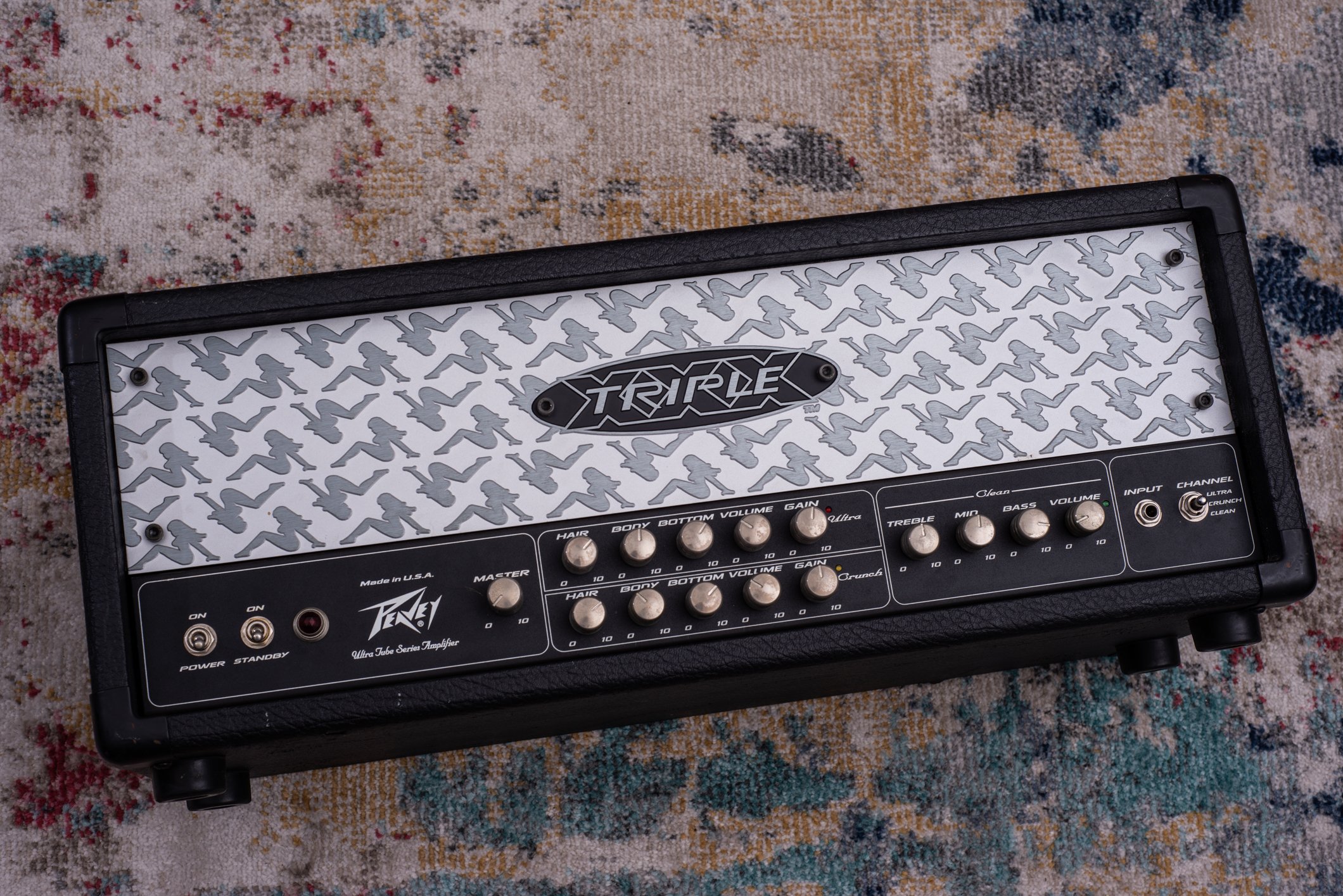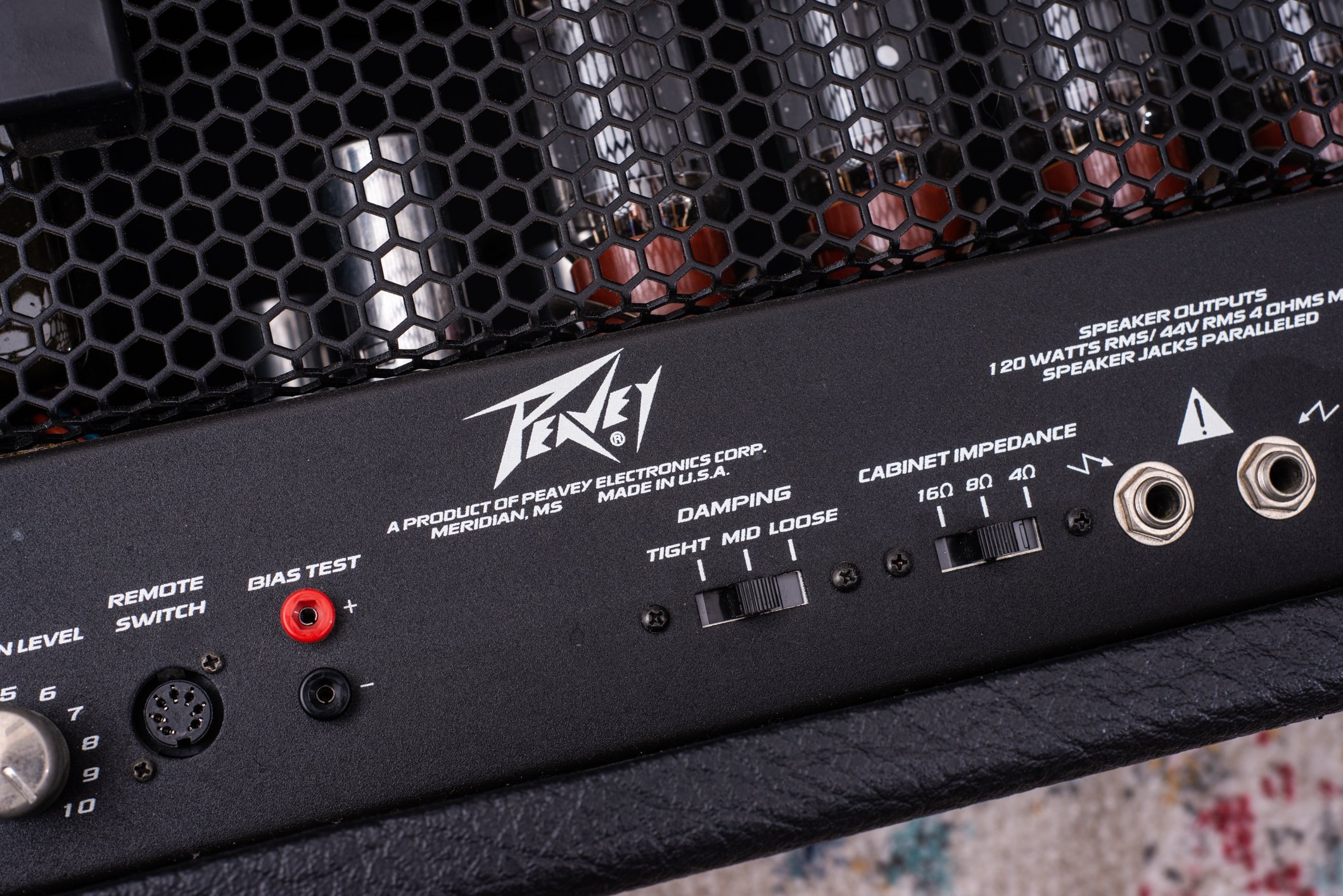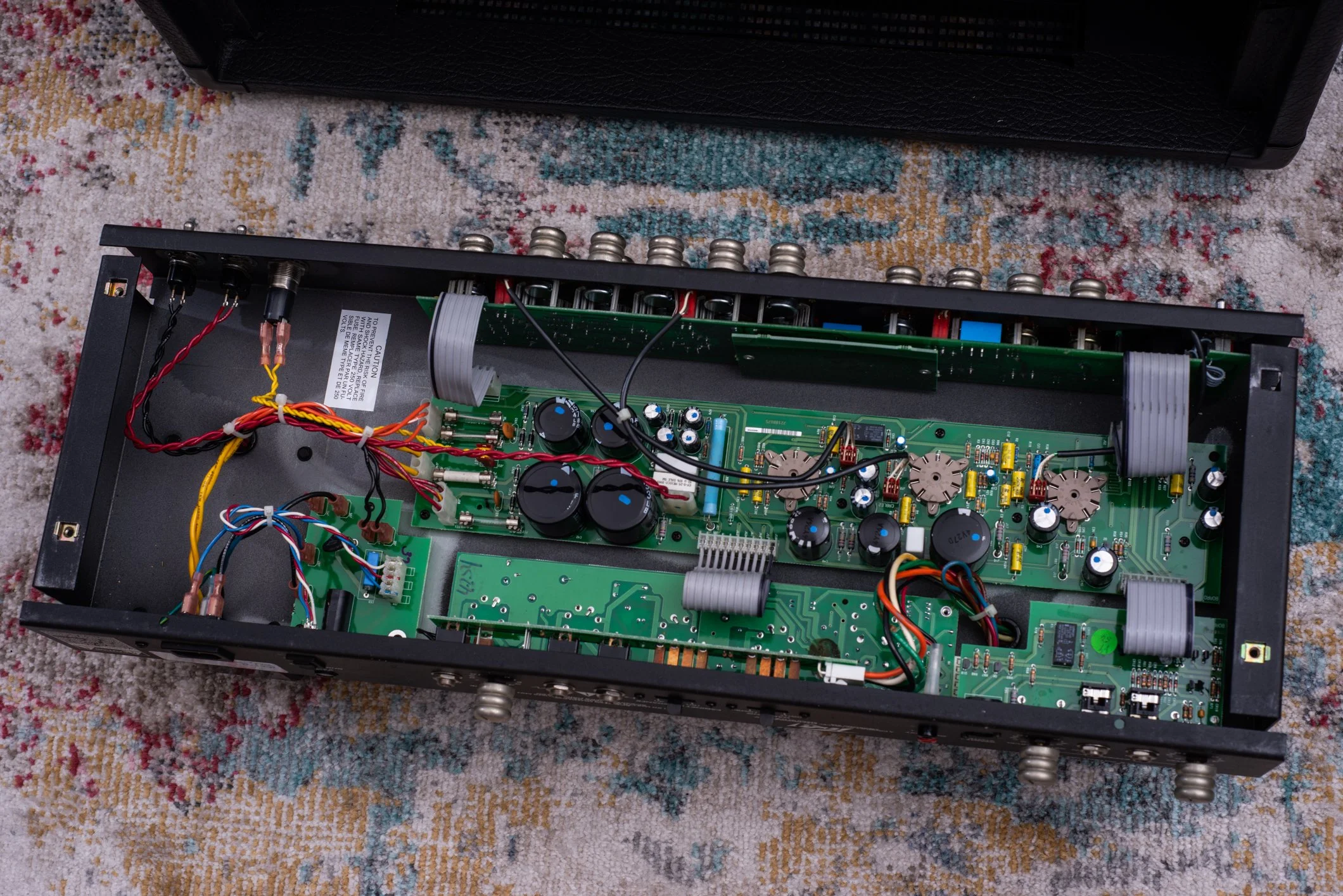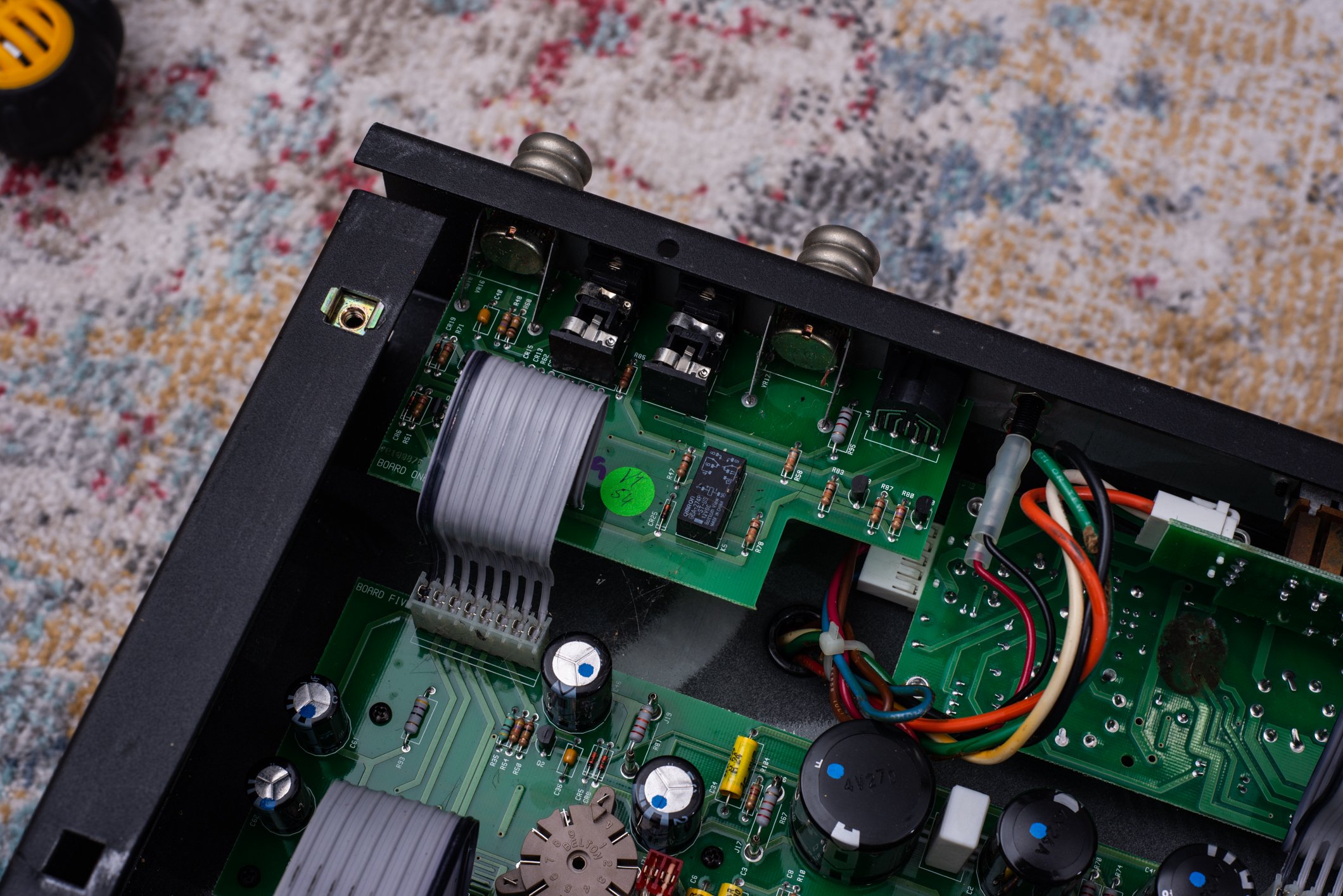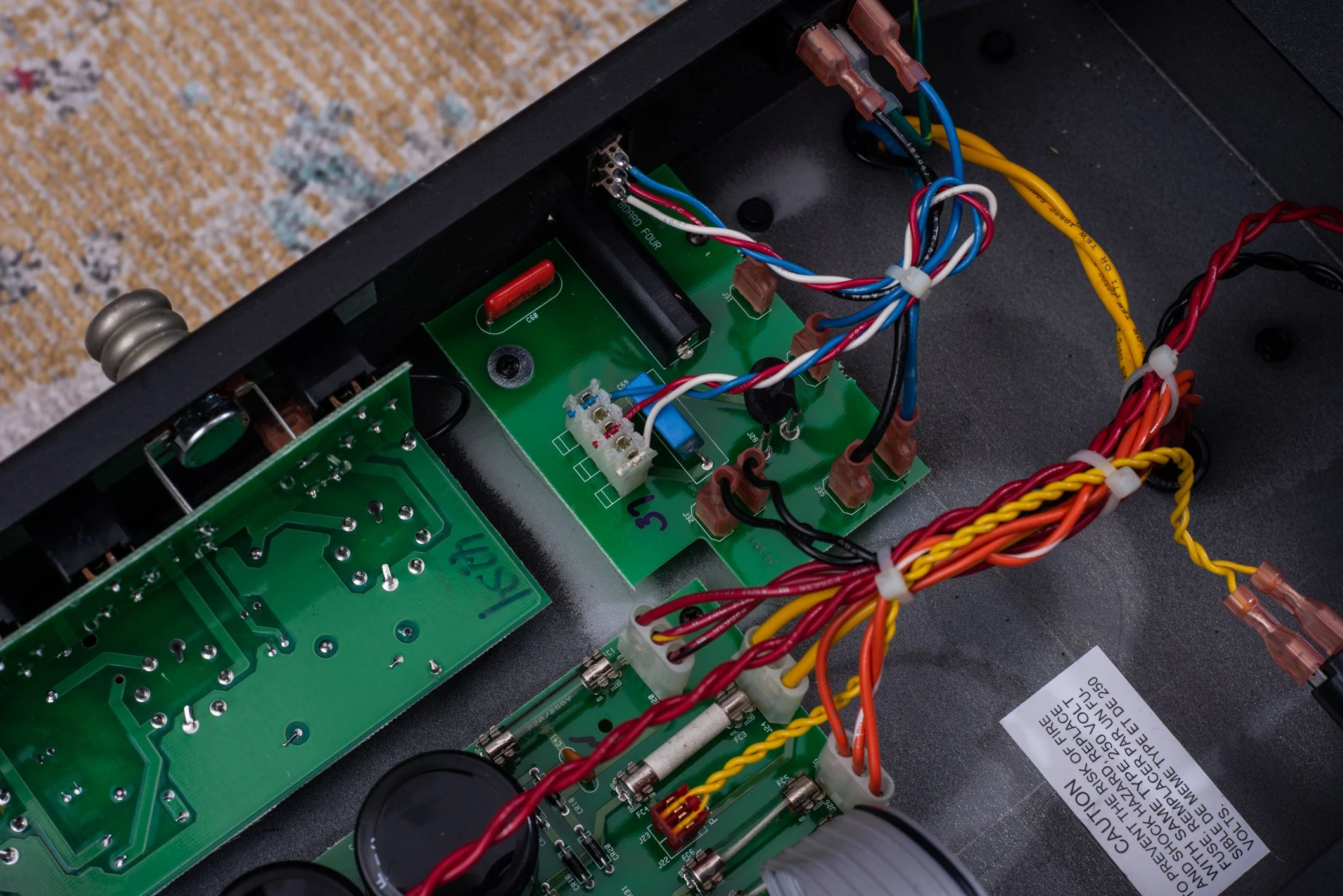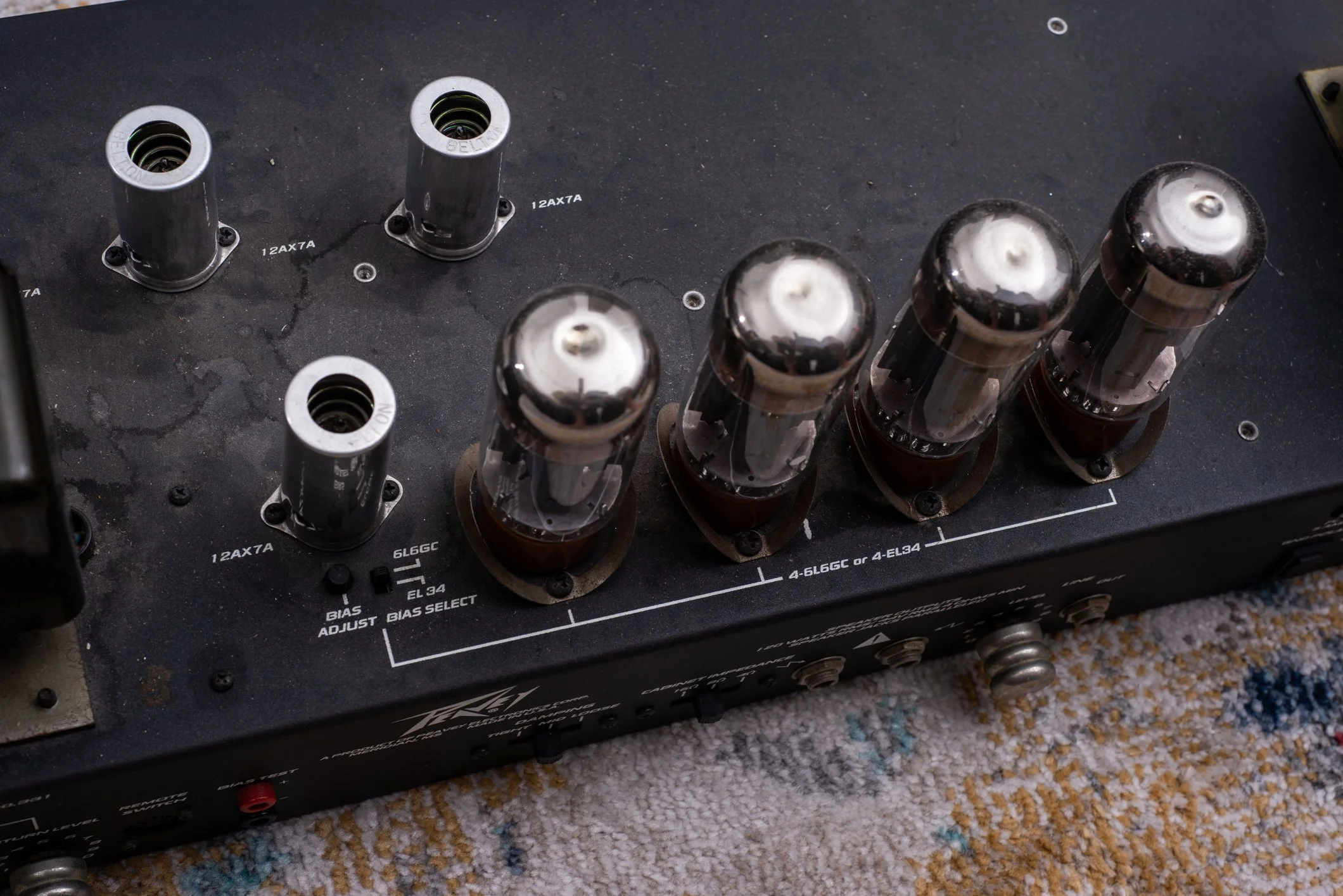2005 Peavy Triple XXX
Specs
3 Channels
120w Output
4x 6L6 Power Tubes
4x 12AX7 Preamp tubes
$899 in 2005
Overview
This often overlooked amp has quickly become one of my budget favorites, and I’d argue it keeps up with amps triple its price. While the visual style can be a bit divisive with the “trucker girls” faceplate, I find the theme to be charming in a kind of, mid-2000’s way, especially with the controls on the gain channel following a similar theme (“Hair, Body, Bottom”). The amp is the evolution of the Ultra series, which have gone up quite a bit in value in recent years. If you want to trace its history even further, it could be argued that the Ultra series grew out of the VTM and Butcher series, but that’s a little more of a grey area since those are more Marshall JCM800-like, while the Ultras (and XXX) are a departure from that design.
The circuit is quite unique, with an active EQ section, and a lack of power amp presence/resonance controls (although there is a swtichable damping mode on the rear panel which can be used to bring in more bass). Any of the EQ controls, when turned above the halfway point, are actually adding volume to the frequencies they affect, as opposed to an entirely passive EQ like most amps have. This active EQ allows for some really wild tone shaping and I actually don’t miss the presence control as much as I expected.
It’s worth mentioning that the crunch channel is not really a “crunch” channel - it’s an all out high gain channel with the same kind of saturation you might expect from an amp like a Mesa Rectifier or Peavey 5150/6505. It’s actually so much gain that it’s hard to tell if the Ultra channel truly has more gain, since the gain becomes mostly unusable above 1 or 2 O’clock on the knob for either channel. This is nice for setting up a high gain rhythm and solo sound on two separate channels, and since they have separate volumes it works great for live switching. The amp also has a master volume control which is a nice quality of life feature, since you can set the volumes of the 3 channels to roughly match, then control the whole amp from one knob.
While the clean channel isn’t something this amp is really remembered for, it’s very usable and extremely clean. It has a fender style tone stack, where the EQ controls are just after the input gain stage and before the volume control, so it does a pretty accurate Fender Twin impression without much fuss. Many high gainers have good clean channels, but a lot of the time they still use a tone stack further in the circuit (“plexi” like, some might describe it as) so it’s nice to find one that leans much more towards the American type of clean tone.
This is the same amp as the Peavey 3120, except that amp is equipped with EL34’s stock and has a different aesthetic. However, this amp has a very easy system for rebiasing for EL34’s, all you need to do is flip a single switch right next to the tube sockets. It also bears a lot of similarity to the popular JSX amplifier, with the main difference being that amp uses the Crunch channel from this amp as its lead, and there is another lower-gain crunch channel in its place, which adds to the versatility of the amp. Also important to know, the more recent Peavey XXX II amplifier is an exact clone of the previously discontinued JSX model, with the same channel configuration. I think amps that are more versatile, especially in the more budget arena, just flat out sell better since they cast a wider net. However, I really prefer this original XXX and the ability to set up two ultra-saturated high gain sounds and switch between them, especially for metal styles. If I wanted a lower gain crunch sound, I’m not sure the XXX or XXX II is the amp I would select, although that active EQ does mean it can do some sounds exclusive to this amp.
Considering I regularly see this around $400-500 (I bought this one for $325!) it’s hard not to recommend this to almost anyone, even if it just serves as your backup amp. If you have someone just learning, this is an amp they can use from Day 1 for the next decade and still sound great - talk about a good value.
